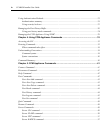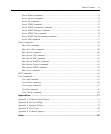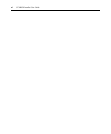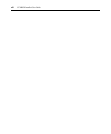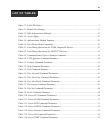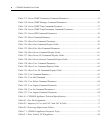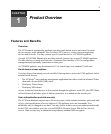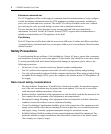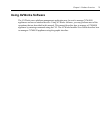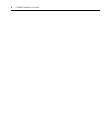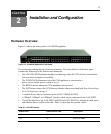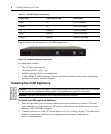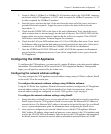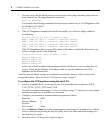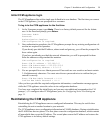
2 CCM4850 Installer/User Guide
Extensive command set
The CCM appliance offers a wide range of commands that allow administrators to easily configure,
control and display information about the CCM appliance operating environment, including its
ports, user accounts and active sessions. The serial CLI is always available on the unit’s console
port, and may be easily accessed during a session with an attached serial device.
The user interface also offers descriptive error message data and built-in command help
information. On-board Trivial File Transfer Protocol (TFTP) support allows administrators to
upload new functionality to CCM appliances in the field.
Port history
Each CCM port has a buffer that holds the most recent 64K bytes of online and offline serial data.
A separate history command mode lets you navigate within a port’s current history file and conduct
tailored searches.
Safety Precautions
To avoid potential device problems, if the building has 3-phase AC power, ensure that a computer
and its monitor (if used) are on the same phase. For best results, they should be on the same circuit.
To avoid potentially fatal shock hazard and possible damage to equipment, please observe the
following precautions:
• Do not use a 2-wire extension cord in any Equinox product configuration.
• Test AC outlets at the computer and monitor (if used) for proper polarity and grounding.
• Use only with grounded outlets at both the computer and monitor. When using a backup Unin-
terruptible Power Supply (UPS), power the computer, the monitor and the CCM appliance off
the supply.
Rack mount safety considerations
• Elevated Ambient Temperature: If installed in a closed rack assembly, the operation tempera-
ture of the rack environment may be greater than room ambient. Use care not to exceed the
rated maximum ambient temperature of the unit.
• Reduced Airflow: Installation of the equipment in a rack should be such that the amount of air-
flow required for safe operation of the equipment is not compromised.
• Mechanical Loading: Mounting of the equipment in the rack should be such that a hazardous
condition is not achieved due to uneven mechanical loading.
• Circuit Overloading: Consideration should be given to the connection of the equipment to the
supply circuit and the effect that overloading of circuits might have on overcurrent protection
and supply wiring. Consider equipment nameplate ratings for maximum current.
• Reliable Earthing: Reliable earthing of rack mounted equipment should be maintained. Pay
particular attention to supply connections other than direct connections to the branch circuit
(for example, use of power strips).



